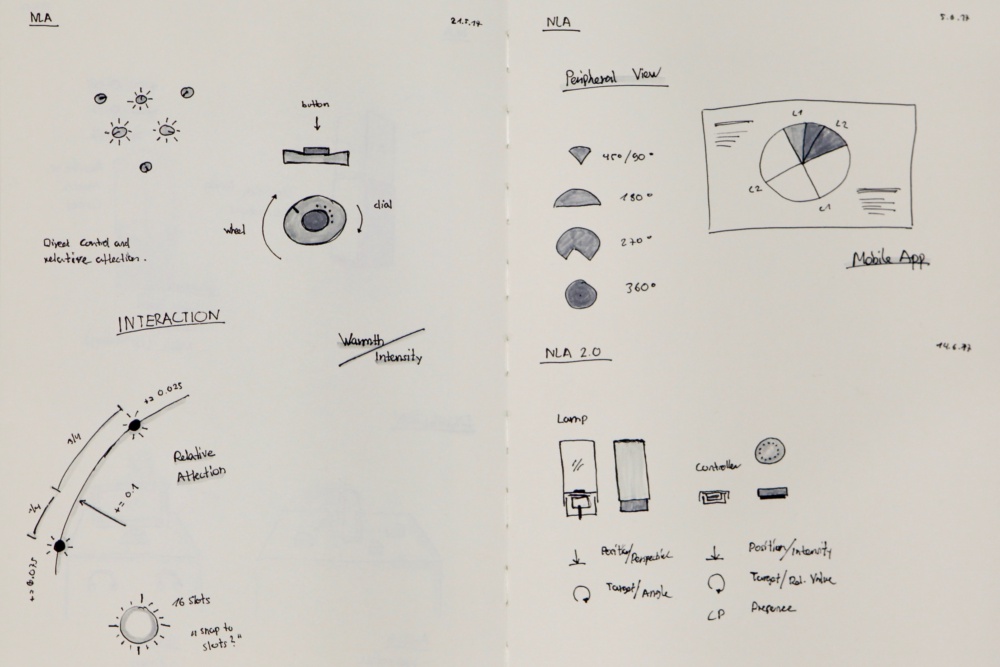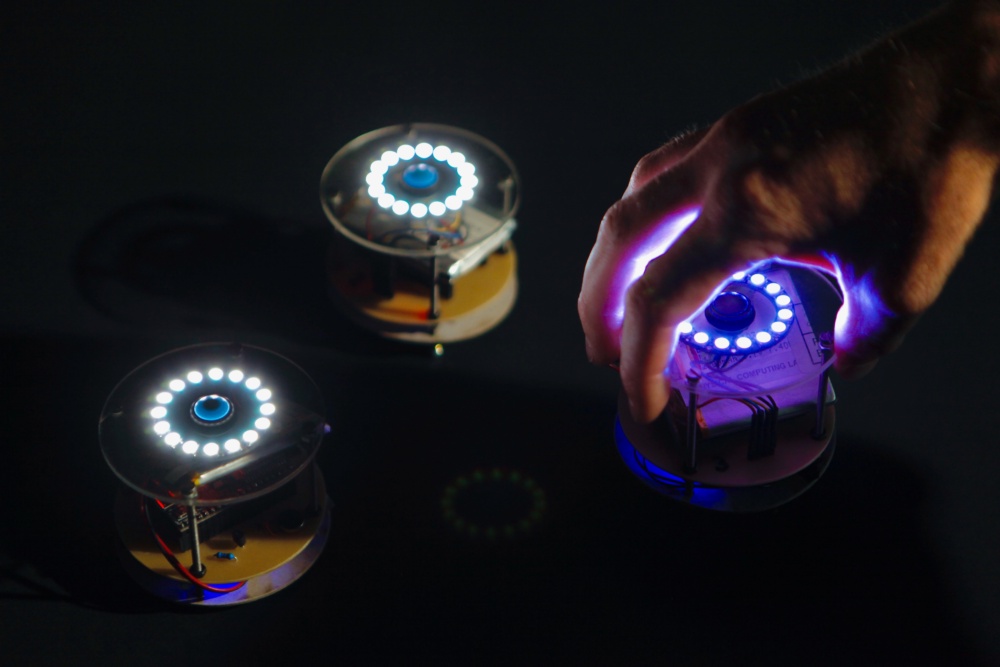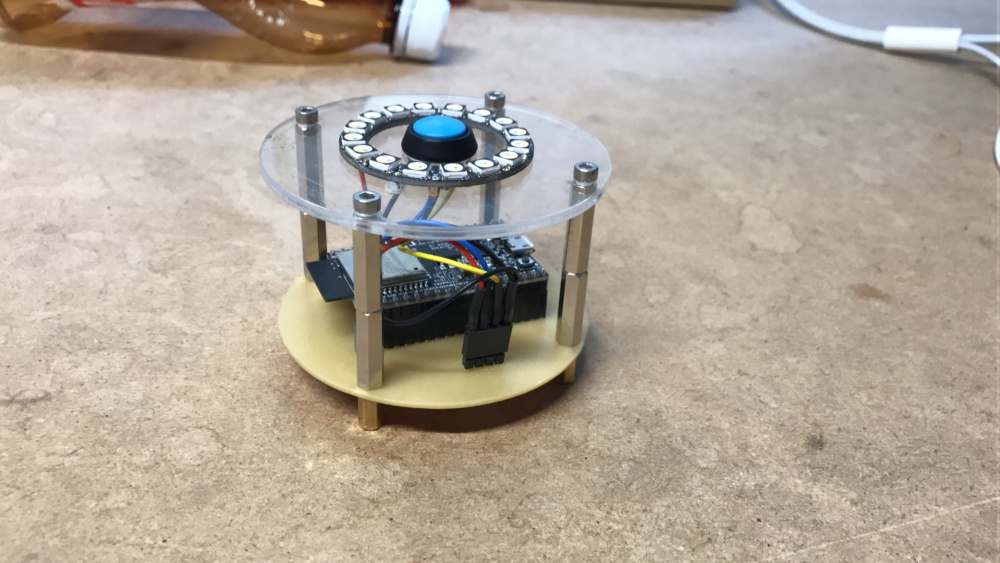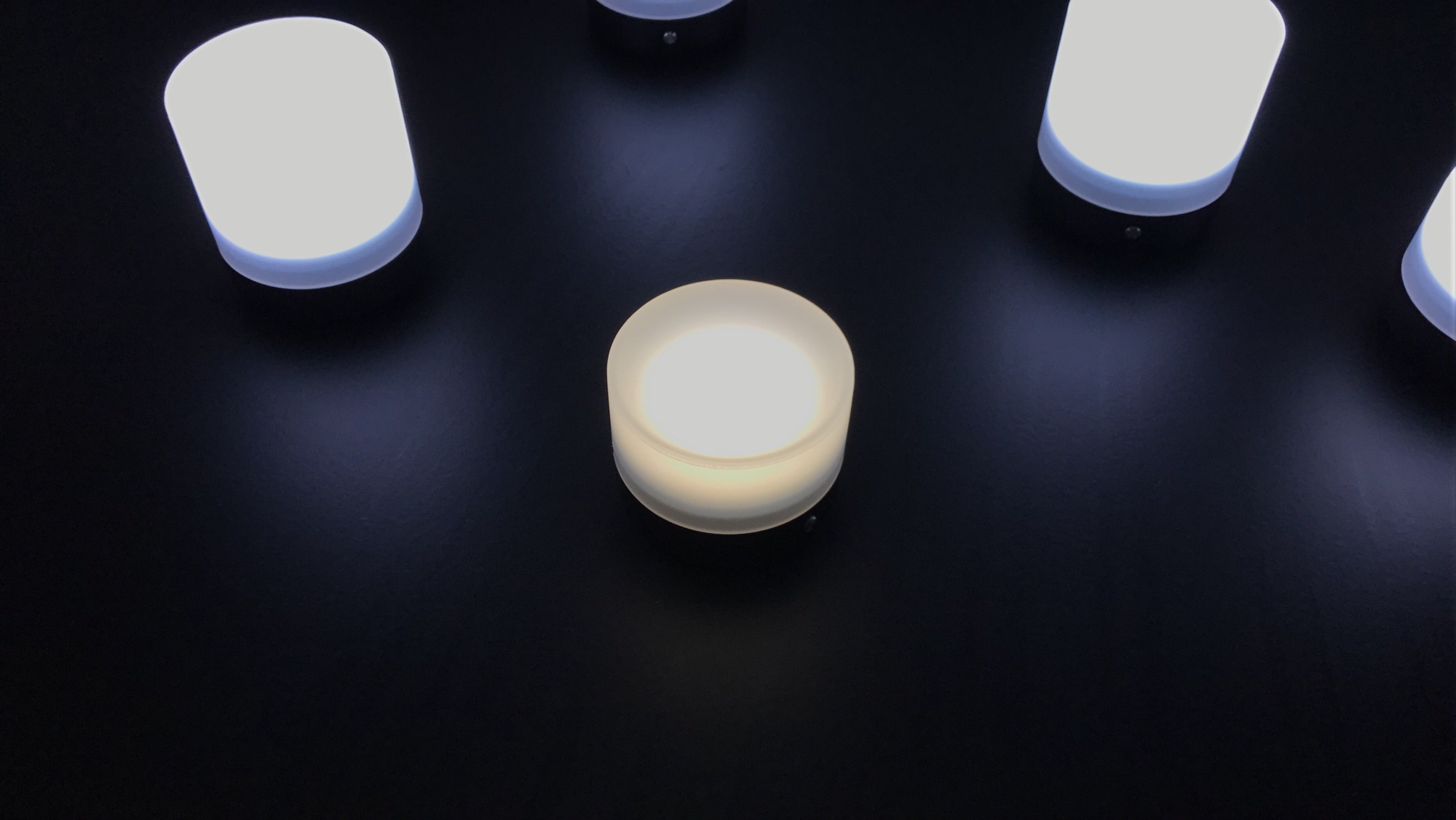Networked Light Artifacts
In our increasingly digitalized world, we are surrounded by intelligent networked systems. At present they are used primarily to optimize production processes in industry and administration. The flow of goods is monitored by means of sensors; faulty functions are recognized and processes corrected. However, the use of such networked systems is increasingly entering our private worlds. Household appliances are equipped with interfaces that enable them to connect to smartphones, while lights and sockets can be operated from great distances. A network of things that can communicate invisibly with each other is created. The challenge confronting designers is to design complete ecosystems rather than still thinking in terms of individual products or interactions.
In the Physical Computing Lab at Zurich University of the Arts, the way in which intelligent systems work is examined. By confronting questions about networking, directing, and visualizing objects, Joël Gähwiler and Moritz Kemper have developed tools and methods for a model design process. “Networked Light Artifacts” shows a possible use of the repertoire of methods they have developed. A collection of lighting objects communicates by means of a wireless interface. The individual lamps are synchronized with each other and allow light to be controlled in a surprising way.

By physical manipulation, for instance a turning movement, the brightness of the lights can be regulated. As the objects on the table are networked with each other, the interaction does not affect just a single object but all the objects in the same network.

The first ideas are refined through repeated processes. The function and interaction is examined by prototypical constructions. In terms of method, this demands from the designers a fundamental understanding of electronics and knowledge of the basics of programming. Supported by the existing platform shiftr.io, it becomes possible to network the objects.

